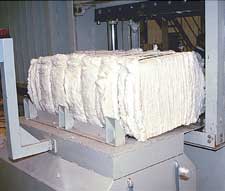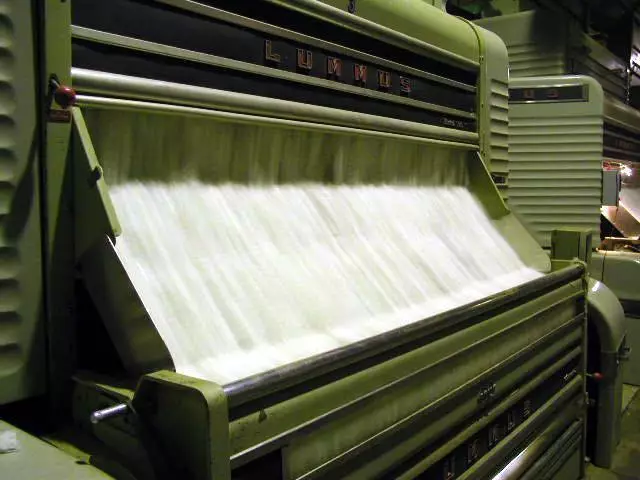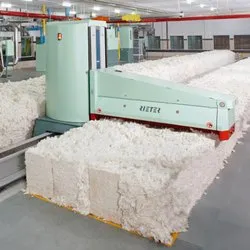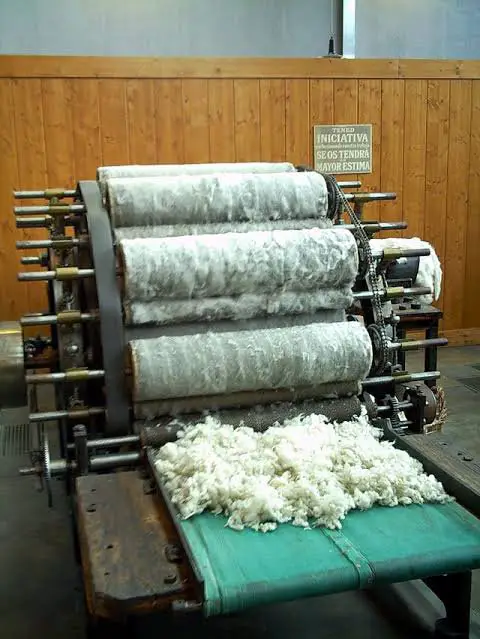
This guide, which is on the topic “Cotton Ginned and Ginning Explained,” will be about cotton ginned, and the meaning of ginning will also be explained.
However, cotton ginning is the process by which the seeds are separated from the cotton fibers.
This guide on “Cotton Ginned and Ginning Explained” will detail the types of processes.
I will also give details on things you need to consider during the ginning process. Other related points about this will also be given.
Cotton Fiber Ginning
You might also be wondering what cotton gins are; well, they are factories that deal with completing the first stage of cotton processing.
The first stage of cotton processing has to do with the separation of the lint from the seed.
To avoid expensive transport, gins are generally located in cotton-growing areas.
The lint and seed were separated by hand before the invention of the gin. To separate only half a kilo of the lint from the seed, it took one person a whole day.
However, in one day, modern gins can separate and bale around 230,000 kilograms of cotton.
Ginning Explained
Ginning is considered to be the first mechanical process that is involved in processing cotton.
The cotton fibers are separated from the cottonseed and dust particles using the ginning machine.

Using the hydraulic pressing machine, cotton fibers are pressed into bales. The development of several variations, grading, marketing, and fiber growth.
Cotton Ginning Process
Firstly, to reduce the moisture content of the cotton, it will have to go through dryers. Then, to get rid of the foreign particles or materials in it, it will also have to go through the cleaning equipment.
After that, the cotton is released into the air and transported to gin stands. This is where the revolving circular saws pull the lint from the saw teeth.
This is done by rotating brushes or by air blasts. With that being done, the cotton is then pressed into 500-pound weight-contained bales.
After that, the bales of cotton are then transported to the textile spinning mill. This is for further processing.
The overall process of the cotton processing will be monitored by a quality control team to ensure quality.
Objects of the Cotton Ginning Process
The main objects of the cotton ginning process will be listed below:
First, there is the fact that ginning is used to collect both the cottonseeds and waste together.
Secondly, the ginning process is also done for the complete separation of the fibers from the cottonseeds.
The third object of the ginning process is that it is used for the separation of the entire fiber.
And the fourth object of the ginning process, which is also the last for this guide, is that it is used to collect fiber without any effects.
Problems with the Ginning Process
Below will be some of the common flaws in the ginning process:
Tons of wastage
Neps formation
Gin-cut fiber
Crushed seeds
Classification of Ginning in Spinning
Ginning is classified into three types. And, these classifications include:
Roller ginning
McCarthy ginning
Saw ginning
McCarthy ginning is also grouped into three types and they include single acting McCarthy ginning, double roller McCarthy ginning, and the double acting McCarthy ginning.
Modern Cotton Ginning process
A modern machine is advantageous for an automatic cotton ginning process.
Cotton gets transported from the field to the bale until it gets to the spinning mill, where it is spun into thread and then woven into the fabric.

Cotton takes approximately five months to grow from a planted seed to a ready plant.
The cotton picker is the name of the harvesting machine. It extracts the fuzzy cottonseed out of the boll of the plant and then leaves behind a trail of sticks and burrs.
The pulled cotton is then unloaded into a tractor-drawn buggy by the machine. The machine turns the cottonseed into a module.
A module is a gigantic rectangular block. The module is then taken to the processing plant by a truck. The processing plant is referred to as a cotton gin.
The burrs and sticks are removed, along with any remaining debris and seeds, immediately after the cotton get to the processing plant.
After that, the module is dumped into a feeder by a truck. The feeder then moves the module, which contains the packed cotton, into a dispenser.
The ground cottonseed is fed into a conveyor belt and then into the hot box. The hot box is where the ground seed cotton gets mixed with hot air.
This process permits the evaporation of moisture, which in turn makes the cottonseed easier to clean.
Core Machine Used in Ginning
The wad buster is what is used to break up the clusters of cottonseed. This is done by plunging it against a screen. Down a narrow chute, the loose remains fall through the openings of the screen.
The steady flow is a machine in which the seed cotton moves through and gets divided equally between two processing lines.
The cotton seed then enters a burr machine on each line. This machine then grabs the cottonseed using a circular saw and swings it against metal bars.
The heavier debris gets thrown off by centrifugal force. The cottonseed goes through one pipe and the debris through another.
The debris is then transported to a waste drop and then out of the plant by a large auger.
With that being done, the cotton seed is ready for the last and final step of processing.
The Gin Stands, which are a row of machines, get fed by a network of pipes. It separates the seed cotton from the fuzzy part, which is known as the lint.
Each stand will be arranged horizontally and separated by a steel rib. The cottonseed will be grabbed by the saw teeth, which will then pull the lint through the narrow gap between the saw and rib.
The seeds get to spin in front of the ribs and are then dropped onto a conveyor. This is because they are too large to go through.
However, the lint goes into a shaft, which takes it to the packaging area. After that, the thread is made using this cotton in the spinning mill.
Final Thoughts on Cotton Ginned and Ginning Explained

There are actually some important criteria for seed cotton selection. And they include the leaf grade, strength, length uniformity, fiber length, moisture, color, and trash.
In modern ginning, although it has been explained above. First, the cotton is dried to help get rid of the moisture.
After that, clean the cotton, as this will help get rid of any stems, leaves, burs, or other foreign matter.
The fibers will then be removed from the seeds by a series of rotating saws with teeth.
With that being done, the cotton fibers get squeezed into 500-pound bales. Then get sent to textile mills.
So, with all that being said, this will be the conclusion of this guide on the topic “Cotton Ginned and Ginning Explained.”



